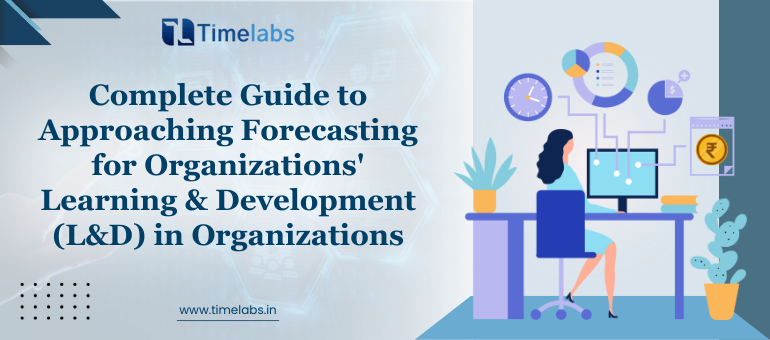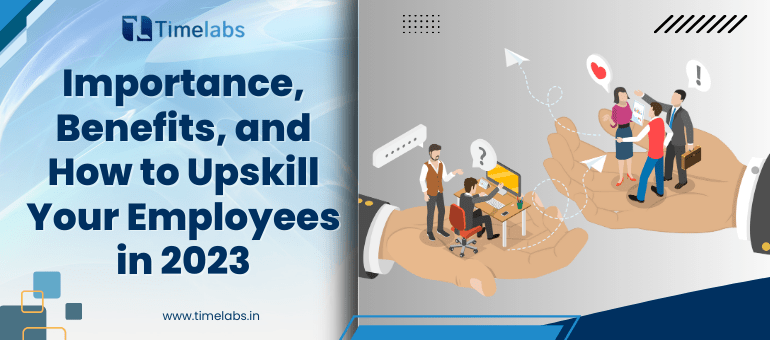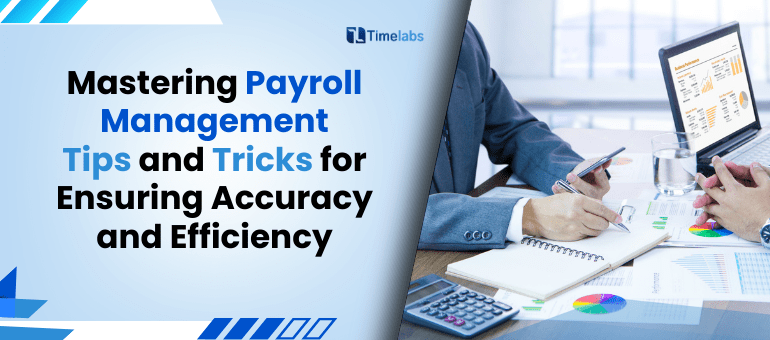There is no way to ignore the significance of L&D to an organization’s workforce. In most of today’s businesses, workers are expected to continuously learn new things and improve their knowledge and abilities in preparation for the future.
The process of mapping out an organization’s future competency requirements, which might impact the Learning & Development of individuals, is referred to as forecasting. We need to plan to grow our workforce, not only in numbers but also in its qualities.
This article provides all the information required to make accurate forecasts. As the initial step toward efficient L&D, it will be easier for you to determine the abilities each worker will need for the foreseeable future.
Skills, Knowledge, and abilities, sometimes known as KSAs, are the primary goals of Learning & Development. KSAs are the foundation of learning and development systems. Therefore, it is of the utmost importance to understand what they are to provide stakeholders with a common vocabulary through which they can communicate with one another about what employees will need in the future for optimal organizational performance.
Efficiently navigating the intricacies of Learning and Development (L&D) forecasting in organizations is greatly aided by the strategic implementation of HR management software.
The following explains what each one means:
Knowledge:
The Knowledge necessary for an employee to perform their job correctly.
Skills
The capacity of an employee to carry out tasks effectively can be obtained through learning, practice, or experience. Skills can be categorized as ‘soft’ and ‘hard’ skills.
Hard skills are job-specific abilities that enable employees to carry out their responsibilities successfully. Examples include computer programming, the production of videos, and accountancy.
Soft skills are defined as personal abilities or attributes that assist an employee in adjusting to and thriving in their work environment. Some examples are communication, critical thinking, decision-making, and working well with others.
Abilities
An employee’s ability to carry out a specific job or duty, considering both mental and physical capabilities.
Focus on enhancing human capabilities, or face the risk of becoming obsolete
The pandemic was one event that drastically affected many facets of employment, ranging from location to establishing competencies. This was because a single event caused the pandemic. Nevertheless, a plethora of other events have the capacity to cause disruptions to a business, particularly when it lacks foresight and preparation for what lies ahead.
In today’s world, technologies such as OpenAI’s ChatGPT, which possesses human-like chatbot capabilities, have the potential to cause another wave of upheaval.
Workforce changes often happen faster than efforts to help affected people. This is especially the case if companies merely react to patterns they have already discovered rather than trying to anticipate what will take place in the future. Workforce enhancements, a cornerstone of effective organizational forecasting, hinges on optimizing Learning & Development (L&D) strategies
If corporations continued to behave in this manner, they would lose their advantage in the market, have to pay more for human capital, and experience a decrease in employee productivity because workers would be concerned about their jobs.
Therefore, to future-proof the organization and maintain a competitive advantage in the face of technological changes, businesses must plan for robust staff Learning & Development.
A comprehensive HRMS (Human Resource Management System) is essential for effectively approaching forecasting in organizations’ Learning & Development (L&D) initiatives.
Who is accountable for an individual’s Learning and Development?
Suppose you are wondering who is responsible for growing employees’ skills and competencies to prepare them for the future. In that case, the talent development or learning and development function is the first thing that comes to mind for you.
Suppose you wonder who is responsible for growing employees’ skills and competencies to prepare them for the future. In that case, the talent development or learning and development function is likely the first thing that comes to mind.
When it comes to making projections about the talents that will be needed in the future, the following is a typical framework that outlines the responsibilities and obligations of each stakeholder:
Leaders:
- Determine how the company will get from where it is now to where it needs to be to achieve its goals, considering where it has been and needs to be.
- Determine the probable issues that could arise and design your strategy accordingly.
- Be aware of the changes and improvements occurring in your industry and the more significant societal and technical upheavals that could impact your business.
- Collaborate with the Learning and Development division to align the organization’s essential future competencies.
L&D Function or Talent Development
- Create a plan for predicting competency levels with specific timeframes.
- Carry out the strategy for predicting the required abilities (for example, future training and development, skill planning, etc.).
- Collaborate closely with the organization’s upper management to determine the primary capabilities the company will need going forward.
- Determine the skills your team must possess to work with your management successfully.
- Collect, organize, and synthesize information on various sources about competencies.
Managers:
- Maintain current awareness of your professional sector and field developments and those specific to your work.
- To assist the team in remaining relevant and achieving future success, it is essential to communicate the team’s present skills and any gaps observed in the L&D function.
Various degrees of forecasting for future competency levels
There are several levels on which one might make predictions regarding future skills.
Global Level:
If demand for a particular good or service continues to fall for an extended period, specific skills and occupations may become obsolete worldwide.
One prominent example of a technology that has become obsolete due to the widespread adoption of liquid-crystal displays (LCD) is the production of displays using cathode ray tubes (CRTs).
On a country or local level:
In tandem with the technological advancement that is taking place worldwide, job and competency standards are also evolving in a manner appropriate across all nations.
The political climate, social climate, economic climate, and technical climate of a country can all have an impact on the kinds of skills and jobs that are in demand. Even today, countries such as China, often called the “factory of the world,” have a significant need for factory and assembly workers.
For instance, the World Economic Forum believes that Emotional Intelligence will become increasingly important in Malaysia, whilst other countries will place a premium on analytical thinking and creative problem-solving.
On a sectoral or industrial level:
Again, we foresee a surge in demand for professions and skills related to technology across the vast majority of industries; however, the particulars will vary widely depending on the character of each sector.
This is made very evident when considering the realm of education. Even though this sector is not immune to the effects of digitisation, a significant amount of reliance is still placed on instructors to provide course materials.
On a job level
Forecasting at higher levels, such as the global, local, and sectoral levels, can be helpful for study; nevertheless, to advance, we need to get down to the job and role level.
It will take a lot of work to make accurate projections at this level since there are such a large number of different job families that could exist. Despite this, there are many tools that can provide data that may be utilized for competency estimates for a wide variety of jobs.
Steps and Procedure
To stay current on the most recent insights and trends, it is crucial to do frequent competency forecasting for the future. Remember that it is a complex process requiring information and input from various sources.
Following our comprehensive guide, which combines the best practices and presents them in the proper sequence, may help those interested in starting this process find it less scary.
1. All leaders must share the priorities and objectives of the company:
The management of the company must agree that it is essential to examine internal factors and ascertain whether the staff is adequately trained to ensure the company’s long-term profitability before the forecasting process can start. Before predicting can even start, this insight has to happen. Before beginning the forecasting process, this understanding is necessary.
The next step for CEOs is to determine the organization’s expected long-term goals and requirements after ensuring everyone is on the same page. As a result, they will better comprehend the employee competencies required to meet those objectives.
2. The management should look at preliminary insights:
Managers are more likely to have acute insights into how duties and talents change over time since they are often situated in positions that bring them closer to the action.
They can understand the present level of competency of their teams as well as the areas in which they are inadequate since they keep an eye on the performance of their team members and assign tasks to employees. Organizational insight is improved to a deeper level when managers are provided access to AI-assisted technologies.
3. Gather and consolidate available information:
The next step is to summarise the research conducted by groups like the World Economic Forum, gather additional data using the mentioned techniques (like holding focus groups with subject-matter experts), or do both. These distinct pieces of information will be used as input in the actual prediction method.
4. Investigate the facts and data to look for patterns:
If we examine historical data, we can identify some signs of the changes in the labor market and the needed abilities. Additionally, it is crucial to remember that while making projections for the near future, such as the next one to three years, is easy, doing so for the future, such as the next five to ten years, will be much more challenging.
No matter how much time has elapsed since the last forecast, it must be reviewed frequently (at least once a year) to update it and include fresh information. This suggests that forecasts produced for periods longer than a year in the future should be kept the same but adjusted as needed.
5. Create a list of competencies and jobs that will need updation shortly:
It is crucial to distribute this list to the entire organization and the additional measures the business will take to ensure its employees are ready for the future.
To be more precise, in the context of employee development, it will be crucial to identify the employees who may be impacted, assess whether they already possess the emerging competencies of tomorrow, and decide how to support employees who may be lacking in some areas in terms of transitioning and developing their skills. It will be crucial to identify which individuals are impacted, assess if they already possess the developing capabilities of tomorrow, and figure out how to help employees who fall short in some areas.
To Conclude
Advanced HR software is a crucial component when approaching forecasting for Learning and Development (L&D) within organizations. Integral to the holistic forecasting approach for organizational Learning and Development (L&D), Employee L&D software streamlines and enhances the process, ensuring skill growth and performance excellence. As organizations embrace the potential of predictive planning, they equip themselves to nurture talent, adapt to industry shifts, and achieve sustainable growth. By embracing the principles outlined in this guide, organizations can navigate the complexities of forecasting and forge a path toward a more agile, skilled, and competitive workforce.



